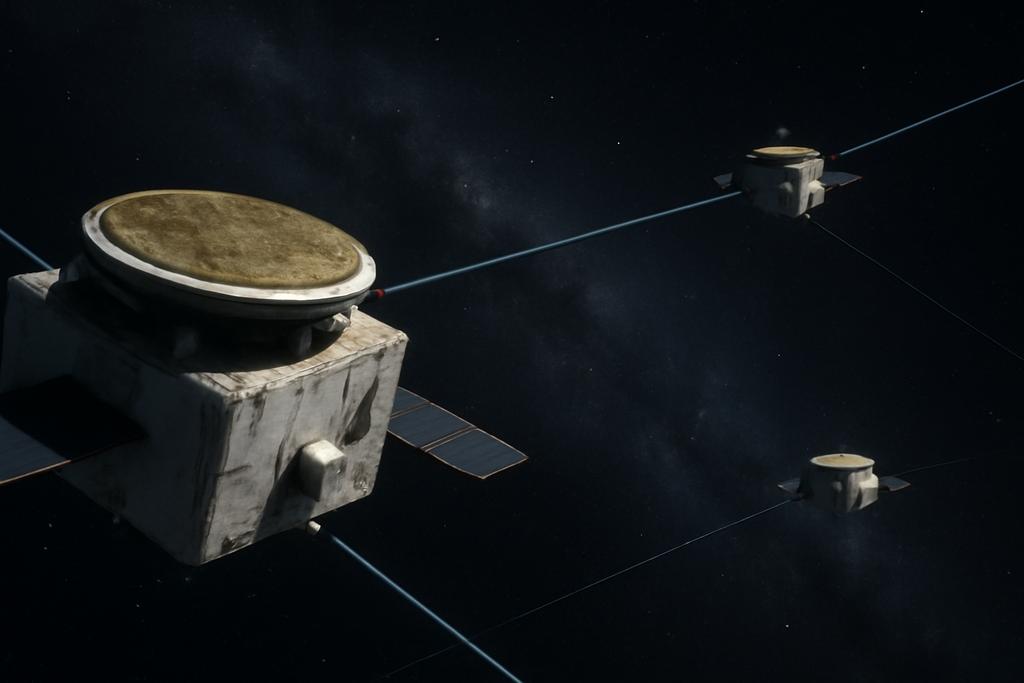The hunt for gravitational waves, those ripples in spacetime predicted by Einstein, is pushing the boundaries of human ingenuity. Space-based detectors like LISA promise unprecedented sensitivity, but their design involves a subtle complexity: Time-Delay Interferometry (TDI).
The Riddle of Redundancy
TDI is crucial for canceling out the noise generated by the spacecraft’s lasers. Think of it as a sophisticated noise-canceling headphone system for the cosmos. Researchers at Ningbo University, led by Gang Wang, have unearthed a surprising aspect of TDI: a surprising degree of redundancy in existing designs. It turns out that many different TDI configurations, while appearing distinct, actually yield highly correlated data, particularly at low frequencies.
This is like having multiple chefs preparing essentially the same dish with slightly different techniques – the final product might look a little different, but the core taste remains consistent. While each approach uses different combinations of laser signals, the resulting information about gravitational waves is remarkably similar. This redundancy, while unexpected, is a significant finding, as it suggests that many proposed designs might be unnecessary.
High-Frequency Hurdles
The picture changes at higher frequencies. Here, the wavelength of the gravitational waves becomes comparable to the distances between the spacecraft. This is where the subtle differences between the TDI configurations become meaningful. Wang’s work shows that configurations with shorter delays perform significantly better in accurately capturing high-frequency signals, which are crucial for certain types of gravitational wave events.
These shorter-delay systems prove less susceptible to the distortions and aliasing effects—think of them as echoes or artifacts in the signal—that plague longer-delay systems. At these high frequencies, it’s like trying to listen to a rapid-fire conversation in a noisy room; the shorter delays allow for a clearer, more precise understanding.
The PD4L Advantage
Among the various TDI configurations studied, the PD4L scheme emerges as a strong contender. This particular design boasts a shorter time span and minimal ‘null frequencies,’ those frequencies where the signal is effectively canceled out. PD4L provides a robust performance, achieving a higher signal fidelity and more precise parameter recovery. In essence, PD4L is a streamlined approach, offering superior efficiency without sacrificing essential information.
Time vs. Frequency: A Dual Perspective
A fascinating twist to Wang’s research involves the difference between analyzing the data in the time domain versus the frequency domain. While frequency-domain analysis reveals significant differences in performance between TDI configurations at high frequencies, the situation changes dramatically when analyzing data in the time domain. In the time domain, the differences between configurations largely disappear.
It’s like looking at a photograph versus watching a video. The photograph, representing frequency-domain analysis, may highlight certain features, but the video, representing the time-domain analysis, offers a complete picture. This discovery emphasizes the importance of considering the analytical method alongside the choice of TDI configuration.
Implications for Future Missions
The implications of Wang’s work are substantial for future space-based gravitational wave missions. By demonstrating the redundancy in many existing designs and highlighting the superior performance of shorter-delay configurations like PD4L, this research offers critical insights for optimizing future detector designs. It allows for more streamlined and efficient approaches to data analysis, ultimately leading to a more profound understanding of the universe.
The choice of TDI configuration isn’t just an engineering detail—it impacts the very data we can collect and interpret from the vast cosmic symphony of gravitational waves. Wang’s research pushes us closer to a more efficient and effective way to listen to the universe’s most profound secrets.










